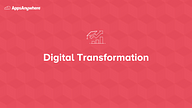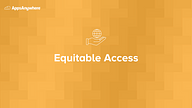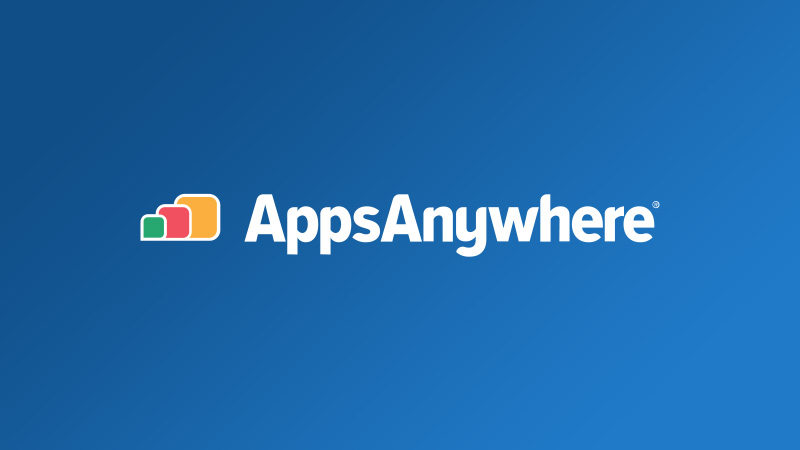What is a Digital Workspace?

Students' Needs are Changing – How can we meet them?
Students' needs have evolved significantly over the past few years and these changes see a shift in how IT teams are delivering and providing students with all their applications, information, and data. With large numbers of students studying individual aspects over a variety of courses, each and every student quickly adopts a unique set of needs from their institution's IT teams. New technologies such as digital workspaces are often required to allow off-campus access to applications and data as well as facilitate collaboration and overall improve the student experience.
A digital workspace solution can offer numerous benefits to higher education institutions on a student-focused level as well as provide advantages to staff and employees. However, as with any digital transformation, there can also be downsides and necessary adjustments. Here at AppsAnywhere, we understand the key components and possible limitations of a successful digital workspace, along with the technological evolutions and importance of how to utilize these to create the solution to these ever-changing student demands and requirements.
What is a Digital Workspace?
A digital workspace is an integrated technology framework designed to manage and deliver the elements of an organization’s IT assets including applications, data, and endpoints. By controlling centrally, the users can collaborate and work remotely by accessing their apps and data in real-time on any device from any location. Regardless of whether the applications and information are stored through cloud services or reside on-premises, digital workspaces provide users with unique, out-of-the-box experiences that are scalable across locations, platforms, and device ownership models. The most successful digital workspaces create a unified, contextual, and secure digital environment for not only the IT teams but also the end-user.
By concentrating the overall management of an institution’s digital resources such as tools, applications, and devices into a single virtual location, a secure remote access experience is created. Students, employees, and IT teams benefit from protected data on both campus-based devices and personal BYOD devices.
Key Features of a Digital Workspace
Creating a unified, contextual, and secure digital environment includes:
- Desktop virtualization supports students and employees in easily accessing apps, information, and data remotely.
- Single sign-on (SSO) for enhanced security by providing fast and secure access to all apps that students and employees need.
- File sharing and content collaboration tools offer greater flexibility to students and boost employee productivity.
- Additional security and unified endpoint management for all personal BYOD and campus-based devices.
How AppsAnywhere could be a part of your digital workspace?
AppsAnywhere acts as a top-level higher education platform helping institutions to make their application catalog accessible to all their students regardless of where or when they need them. By boasting many integration capabilities, AppsAnywhere works as a key aspect of a higher education institution's digital workspace to collate, organize and most importantly, prioritize the different technologies used to grant students access to the applications they need. By streamlining how students access their applications, the time spent downloading, installing, and traveling to campus labs is reduced and instead, they can focus on their studies, thus increasing student outcomes and improving their overall experience. Many learning management systems can be seen as the higher education sector’s digital workspaces for students and staff alike with the appropriate integrations. AppsAnywhere integrates with leading learning management systems such as Canvas and is currently in development to integrate with Blackboard, Moodle, and BrightSpace.
How can a Digital Workspace Help Higher Education Institutions Meet Students’ Needs?
Digital Workspaces and similar technologies can provide many benefits. Given that AppsAnywhere is a platform that accommodates a magnitude of integrations with digital workspaces and having worked with a myriad of higher education institutions, we have seen them undergo digital transformations and reap the rewards. From improving on an IT front to offering a higher student focus, higher education institutions can support everyone across campus as well as increase the outcomes and results of their overall business.
Quite possibly the most important benefit to any technological advancement across campus is to enhance the student experience. Increasing engagement and in turn improving student outcomes. Pittsburg State University in the US adjusted their IT strategy to include AppsAnywhere and by doing so managed to create a high level of convenience for their students. Students are comfortable with their own devices, and all have different working behaviors. By utilizing AppsAnywhere’s integrations Pittsburg State University are able to make their entire application catalog available to all their students on any device, anywhere, at any time.
Another benefit to using a digital workspace is being able to improve collaboration amongst peers and teaching staff. Due to AppsAnywhere making software accessible to everyone on campus it reduces the strain of physical logistics to share and collaborate on study projects. The Ontario College Council Chief Information Officers (OCCCIO) is a collaborative member-run organization created to help improve its members’ ability to effectively run information technology support across higher education. Niagara College in Canada along with St Lawrence College are both members of the OCCCIO and have been working collaboratively through AppsAnywhere to do just that.
Middlesex University in the UK found that their digital workspace integrations with AppsAnywhere helped them to increase productivity amongst staff and students. By adopting AppsAnywhere and reducing their VDI solution, they were able to invest more heavily in portable devices such as laptops. During the Covid-19 pandemic, these laptops were given out for free to students to use for however long they needed. They then saw practically no disturbance around studies despite travel restrictions.
Flexibility is a key benefit of integrating AppsAnywhere into your IT strategy. CLASSE at Cornell have seen this with student flexibility with their particle accelerator labs. Researchers and students from all over the world flock to CLASSE to use their specialist state-of-the-art equipment, however, this brought challenges. Labs with dedicated specialist software would often get booked up and would result in students studying at unsociable hours just so they could get some time to access the software. By introducing AppsAnywhere and working alongside their digital workspaces, students can now access specialist software remotely offering greater flexibility to their students.
AppsAnywhere has many features that help reduce costs. Fanshawe College, an OCCCIO member in Canada has seen this firsthand. Firstly, by reducing their VDI environment which was turning out to be quite expensive and cumbersome to support, they implemented AppsAnywhere which “was one of the easiest procurements [they] did”. Once the software was in place, they used AppsAnywhere analytics to not only track the progress of their investment, but also to build upon their open relationship by delivering the information directly to students. Analytics on usage levels allows Fanshawe to reassess software license fees, thus reducing unnecessary costs.
The higher education sector is seeing often students want the freedom to study at a time and place that suits them and expect to be able to access the software they need on these terms. One of the greatest and most common use cases of having a digital workspace in your IT strategy is the ability to allow accessible remote access. Digital workspaces ensure that increasingly mobile and remote studying habits are accommodated with simple access to the applications students need. Providing equitable access to students in higher education through initiatives such as BYOD policies allows for greater student freedom and flexibility. The University of Dundee managed to do just this through their AppsAnywhere platform by being presented with a method of delivering applications and software on-demand depending on the context of the user, using application virtualization, virtual desktop infrastructure (VDI), or traditional install methods to deploy software in the most appropriate way.
Evolving Digital Workspaces
Given that the digital workspace concept isn’t new and began by providing simplified access to apps and data, that alone simply doesn’t meet the needs of a modern student anymore. Most students are constantly utilizing a range of apps and employees are frequently flicking between many tasks throughout the day. The future ideal of digital workspaces must, to an extent, become automated. Routine task flows, personalized insights and customizable actions such as prioritizing common actions and main tasks are some of the advancements that digital workspace solutions could help students and higher education employees alike.
Elevating Your Digital Workspace
To enhance your digital workspace, keep the core factors in mind, improving student outcomes, simplifying software delivery, enabling BYOD and off-campus access, and supporting online or distance learning. A digital workspace should be designed to facilitate a high level of working for everyone on campus and you can do so today by improving your digital workspace or learning management system with AppsAnywhere integration.
Other Helpful Guides

What’s new in Higher Education Digital Transformation?
In a world where the use of technology has become commonplace, students are seeking to attend universities whose digital profile matches their own.

The importance of Equitable Access in Higher Education
Learn about equitable access and how AppsAnywhere provides equal access to education resources.

Key benefits of blended learning in higher education
Many higher education organizations are now looking to implement a mix of both on campus and off campus learning approaches to provide students with more flexibility. Blended learning is just one of these approaches.